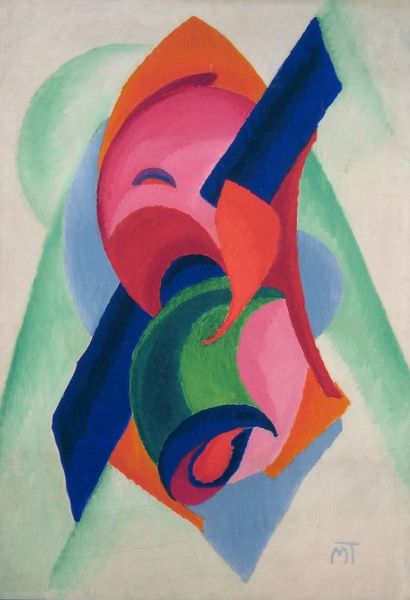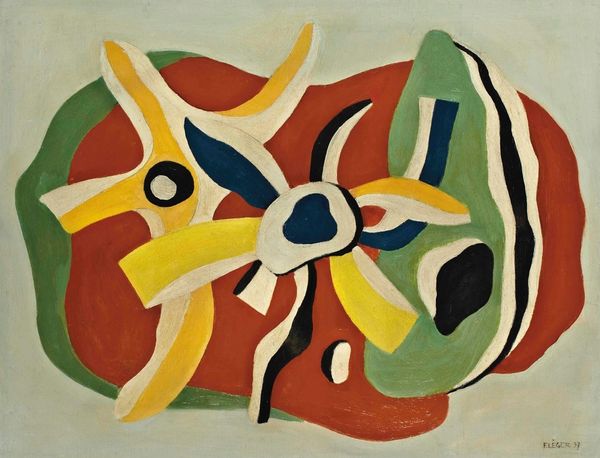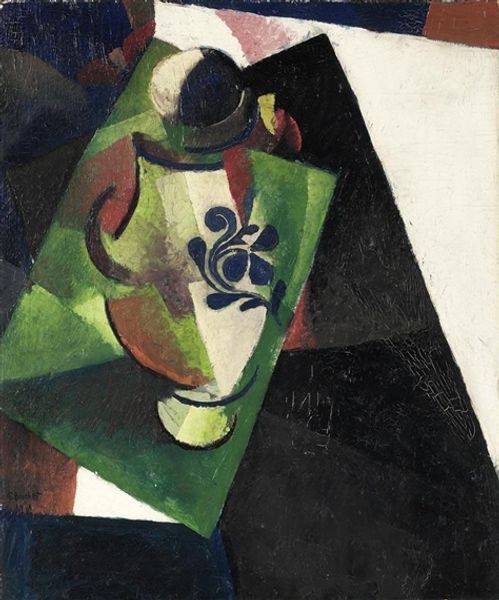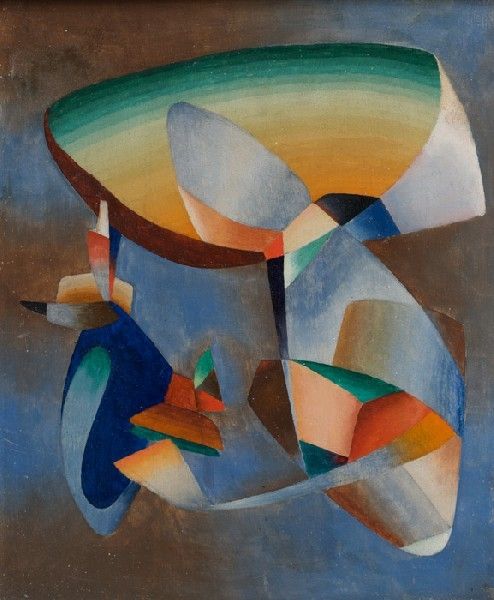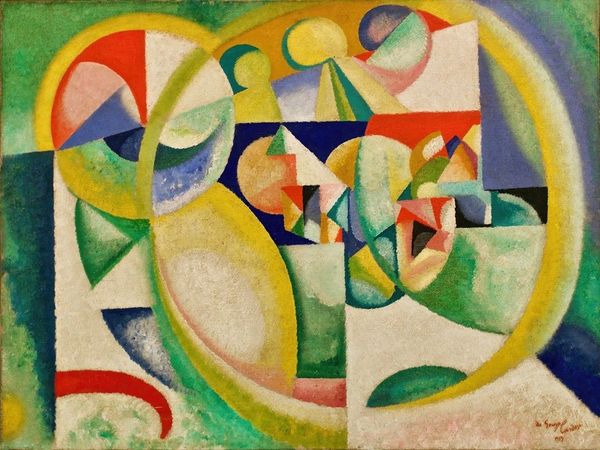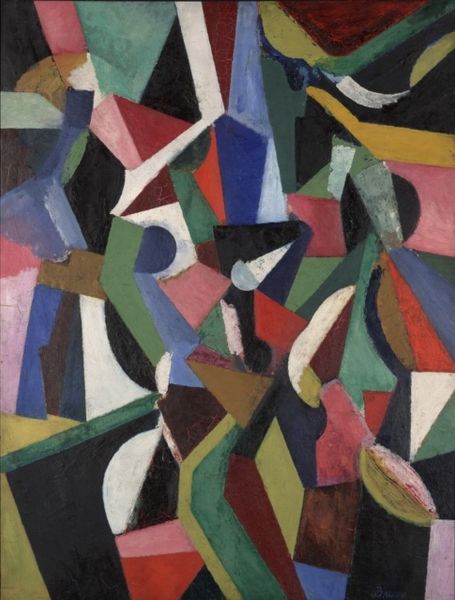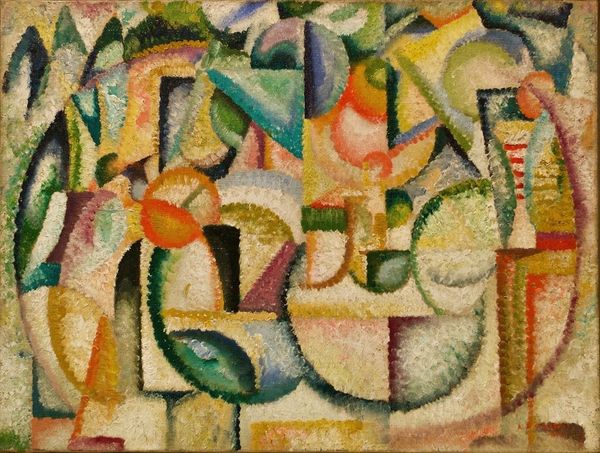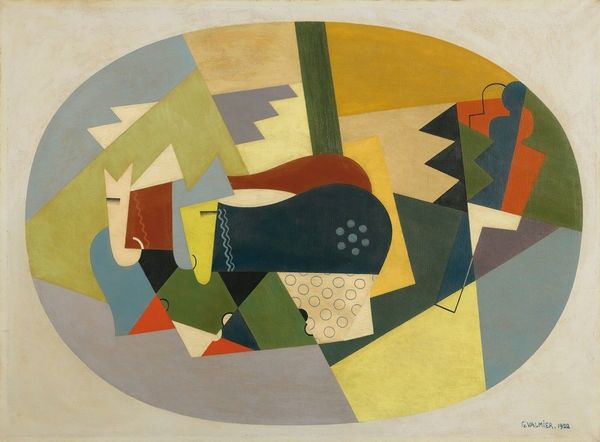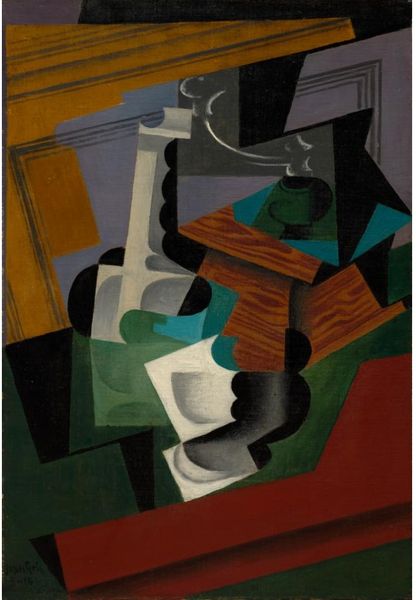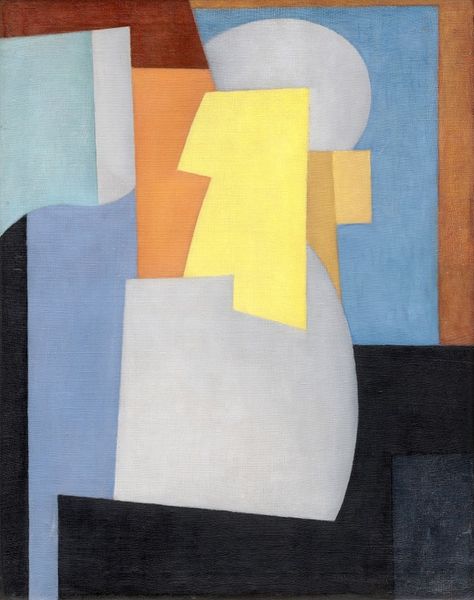
painting, oil-paint
#
portrait
#
painting
#
oil-paint
#
figuration
#
oil painting
#
intimism
#
surrealism
#
portrait art
#
modernism
Copyright: Modern Artists: Artvee
René Magritte painted "Dancer" in 1926, using oil on canvas. Immediately, the composition strikes us with its overlapping forms and muted palette, punctuated by stark contrasts. Magritte employs a strategy of disjunction, assembling recognizable shapes into an unrecognizable whole. The curves and planes suggest a human figure, yet any coherent representation dissolves upon closer inspection. We are left questioning the very nature of identity and form. The artist challenges our perception of space and volume, disrupting conventional perspective. This disruption mirrors the broader intellectual currents of the time, particularly the growing skepticism toward stable meanings. Consider how the interplay of light and shadow models the volumes but ultimately flattens the image, heightening the sense of ambiguity. The lack of clear boundaries forces a reevaluation of what constitutes reality. In its aesthetic and conceptual design, the painting invites us to engage with art not as a mirror reflecting the world but as a lens refracting it.
Comments
No comments
Be the first to comment and join the conversation on the ultimate creative platform.


